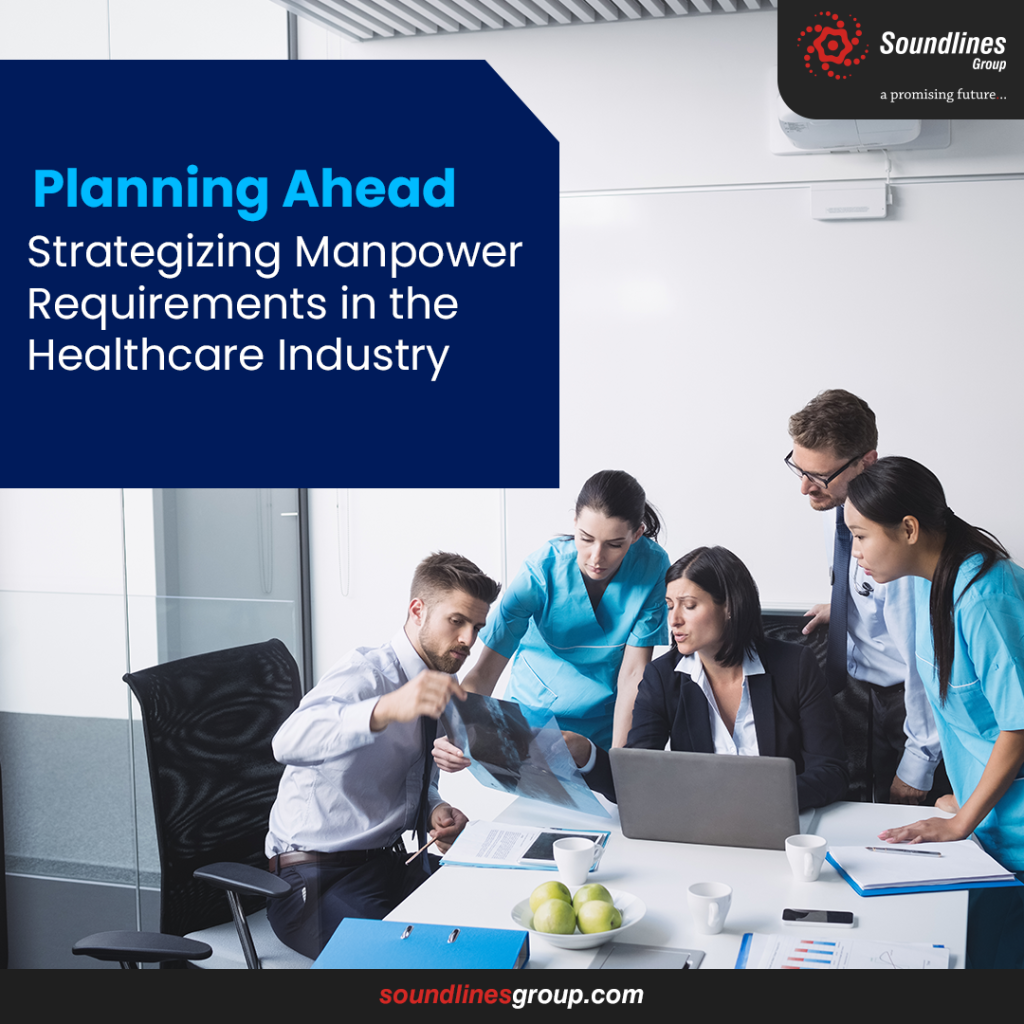Introduction:
In the dynamic landscape of the healthcare industry, planning ahead for workforce needs is crucial for organizations to ensure the delivery of high-quality patient care. By anticipating future staffing requirements and proactively addressing recruitment challenges, healthcare organizations can mitigate risks, optimize resource allocation, and maintain operational efficiency. In this blog post, we will delve into the importance of strategic manpower planning in the healthcare industry and explore effective strategies for forecasting and meeting workforce needs.
The Significance of Manpower Planning:
Manpower planning, also known as workforce planning, involves analyzing current staffing levels, projecting future demand, and developing strategies to address workforce gaps. In the healthcare industry, where the demand for skilled professionals is continually evolving, effective manpower planning is essential for:
- Ensuring Adequate Staffing Levels:
By forecasting future staffing requirements based on factors such as patient volumes, service demand, and industry trends, healthcare organizations can avoid understaffing situations and maintain optimal staffing ratios for patient care.
- Managing Budgetary Constraints:
Strategic manpower planning allows healthcare organizations to align staffing levels with budgetary constraints and financial objectives. By optimizing staffing patterns and identifying cost-effective recruitment strategies, organizations can minimize labor costs while maintaining quality of care.
- Enhancing Operational Efficiency:
By proactively addressing staffing needs, healthcare organizations can minimize disruptions to operations, reduce reliance on temporary staffing solutions, and improve overall efficiency in service delivery.
- Supporting Growth and Expansion:
Manpower planning is essential for healthcare organizations planning expansion initiatives, such as opening new facilities or launching new service lines. By accurately forecasting staffing requirements, organizations can ensure they have the necessary workforce in place to support growth and meet patient demand.
Effective Strategies for Manpower Planning:
To effectively plan for future workforce needs in the healthcare industry, organizations can employ the following strategies:
- Data-Driven Analysis: Utilize historical data, patient demographics, and utilization patterns to identify trends and forecast future staffing requirements. Incorporate factors such as population growth, disease prevalence, and technological advancements into workforce projections.
- Collaboration Across Departments: Engage stakeholders from clinical, administrative, and human resources departments in the manpower planning process. Collaborative efforts ensure that workforce projections align with organizational goals and strategic priorities.
- Flexibility and Adaptability: Recognize that manpower planning is an iterative process that requires flexibility and adaptability. Regularly review and adjust staffing projections based on changing circumstances, such as fluctuations in patient demand or regulatory changes.
- Talent Pipeline Development: Invest in talent pipeline development initiatives, such as internships, residencies, and continuing education programs, to cultivate a pool of qualified candidates for future recruitment needs. By nurturing internal talent and fostering professional growth, organizations can reduce reliance on external recruitment and promote employee retention.
- Strategic Recruitment Partnerships: Collaborate with reputable recruitment agencies like Soundlines Group to access a diverse pool of qualified healthcare professionals. Recruitment partners can assist with sourcing, screening, and onboarding candidates, enabling organizations to fill critical positions efficiently and cost-effectively.
Conclusion:
In the dynamic and ever-evolving healthcare industry, strategic manpower planning is essential for ensuring organizational resilience, operational efficiency, and quality patient care. By adopting a proactive approach to workforce planning and leveraging data-driven insights, healthcare organizations can anticipate future staffing needs, mitigate recruitment challenges, and position themselves for long-term success.
Through strategic partnerships with recruitment agencies like Soundlines Group and a commitment to talent development, healthcare organizations can build agile and resilient workforces capable of meeting the demands of tomorrow’s healthcare landscape.
